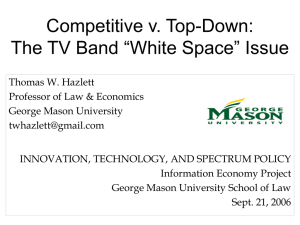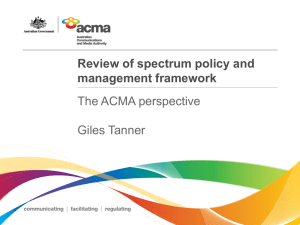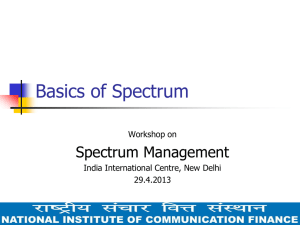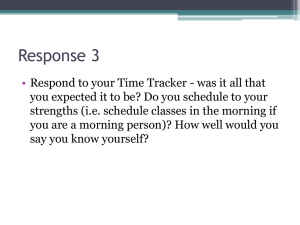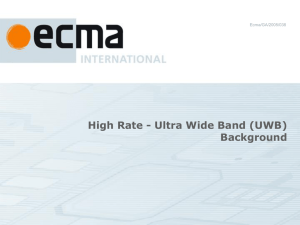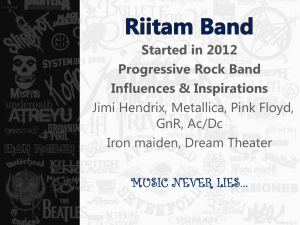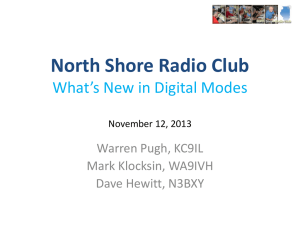European Commission
advertisement
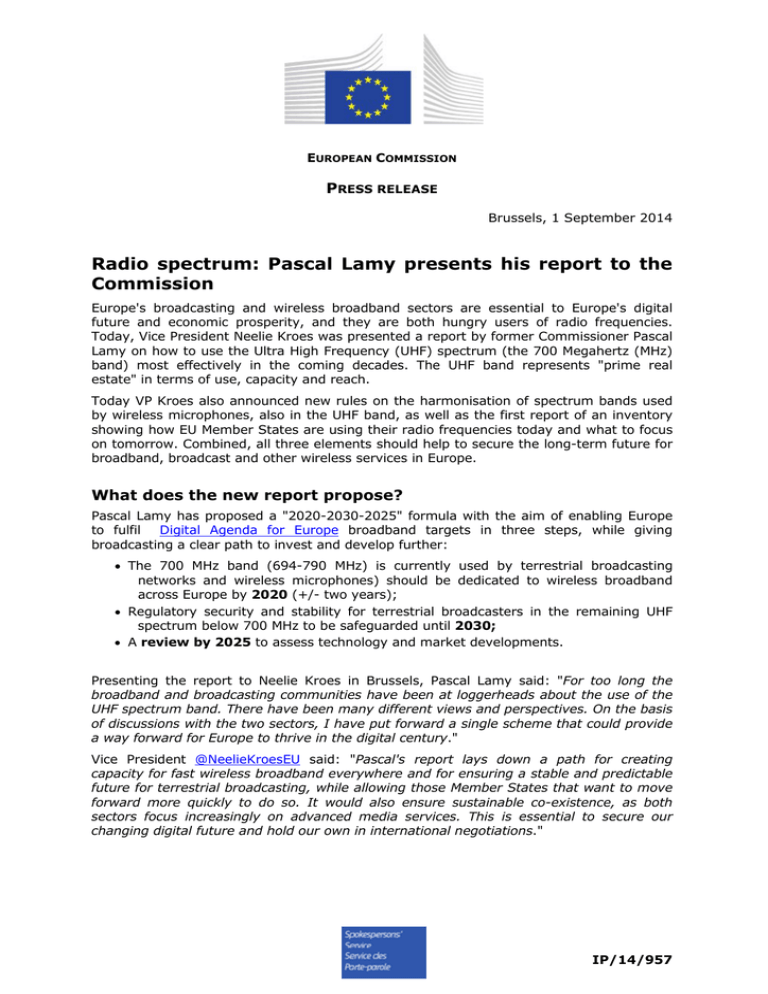
EUROPEAN COMMISSION PRESS RELEASE Brussels, 1 September 2014 Radio spectrum: Pascal Lamy presents his report to the Commission Europe's broadcasting and wireless broadband sectors are essential to Europe's digital future and economic prosperity, and they are both hungry users of radio frequencies. Today, Vice President Neelie Kroes was presented a report by former Commissioner Pascal Lamy on how to use the Ultra High Frequency (UHF) spectrum (the 700 Megahertz (MHz) band) most effectively in the coming decades. The UHF band represents "prime real estate" in terms of use, capacity and reach. Today VP Kroes also announced new rules on the harmonisation of spectrum bands used by wireless microphones, also in the UHF band, as well as the first report of an inventory showing how EU Member States are using their radio frequencies today and what to focus on tomorrow. Combined, all three elements should help to secure the long-term future for broadband, broadcast and other wireless services in Europe. What does the new report propose? Pascal Lamy has proposed a "2020-2030-2025" formula with the aim of enabling Europe to fulfil Digital Agenda for Europe broadband targets in three steps, while giving broadcasting a clear path to invest and develop further: • The 700 MHz band (694-790 MHz) is currently used by terrestrial broadcasting networks and wireless microphones) should be dedicated to wireless broadband across Europe by 2020 (+/- two years); • Regulatory security and stability for terrestrial broadcasters in the remaining UHF spectrum below 700 MHz to be safeguarded until 2030; • A review by 2025 to assess technology and market developments. Presenting the report to Neelie Kroes in Brussels, Pascal Lamy said: "For too long the broadband and broadcasting communities have been at loggerheads about the use of the UHF spectrum band. There have been many different views and perspectives. On the basis of discussions with the two sectors, I have put forward a single scheme that could provide a way forward for Europe to thrive in the digital century." Vice President @NeelieKroesEU said: "Pascal's report lays down a path for creating capacity for fast wireless broadband everywhere and for ensuring a stable and predictable future for terrestrial broadcasting, while allowing those Member States that want to move forward more quickly to do so. It would also ensure sustainable co-existence, as both sectors focus increasingly on advanced media services. This is essential to secure our changing digital future and hold our own in international negotiations." IP/14/957 Lamy's UHF proposals in detail The 700 MHz band (694-790 MHz) should be repurposed for wireless broadband, but with sufficient lead time to ensure a transition path that minimises cost for spectrum users and citizens and to accommodate the diversity in penetration levels of terrestrial broadcasting within Europe. This implies a time frame of around 2020, plus or minus 2 years. Regulatory stability should be ensured for broadcasting to continue its current use of the band 470-694 MHz until 2030. This involves national, EU and international measures. In consequence, at the World Radiocommunication Conference 2015 (which will review and revise global spectrum-use rules) Europe should reject any plans for primary allocation of mobile to the 470-694 MHz band which is currently already allocated to broadcasting on a primary basis. Some flexibility could nevertheless be catered for through the development of 'down link only' technologies that give priority to primary broadcasting networks. In order to take into account the evolving change in consumer demand as well as new technologies, such as converged networks or large-scale roll out of optic fibre, a stocktaking exercise of UHF spectrum use should be performed by 2025. It would give Europe the opportunity to re-assess where we stand and avoid any freeze of regulation compared to the rapid advance in technology and consumer behaviour. In other spectrum news… PMSE bands The European Commission also today decided to harmonise a set of radio spectrum bands for radio microphones used for Programme Making and Special Events (PMSE). These radio microphones are used at sports events, in concerts or musical theatre productions. Like broadcasters, wireless microphone users have relied on the UHF band, and their continued operation must be safeguarded as the allocations and use of the UHF band evolve. Under the new EU rules, within six months of today these microphones will have access to at least 59 MHz of spectrum at EU level (more spectrum can be made available nationally to cater for specific events and circumstances), which will give manufacturers greater certainty and space for mass-market equipment growth. This measure includes harmonised spectrum in the UHF band (823-832 MHz) and at 1.8 GHz (1785-1805 MHz). Spectrum inventory The report on an EU-wide spectrum inventory shows that the ever increasing demand for spectrum can only be met through more efficient use, for example through more sharing of spectrum among users or further harmonised conditions that spur investment into more efficient technologies. The inventory was established as part of the 2012 Radio Spectrum Policy Programme (see IP/12/141) to analyse efficient spectrum use, in the 400 MHz to 6 GHz range. The report issued today also points to possible further action by the Commission on the coordinated allocation of spectrum bands and shows that six Member States (Bulgaria, Cyprus, Greece, Hungary, Malta and Poland) have still not assigned the 800 MHz band for wireless broadband, missing the 1 January 2013 deadline they had originally agreed to (see IP/13/726 and IP/10/540). In addition not all spectrum in the studied range is currently used. Taking into account feedback from stakeholders, including the European Parliament and Council, the Commission intends to act on the key findings of the report in cooperation with the Member States. 2 Background Pascal Lamy's report is based on 6 months of dialogue on how to use the UHF spectrum band in the mid-to long-term future involving top executives from Europe's broadcasters, network operators, mobile companies and tech associations (see IP/14/14) Pascal Lamy is honorary President of the Notre Europe think tank - Jacques Delors Institute; former chief of the World Trade Organisation; and former European Commissioner for Trade. He has authored the report under his sole responsibility based on 6 months of discussions of the High Level Group (HLG) on UHF which addressed this complex issue. The HLG agreed on the continuing essential role of terrestrial television which will remain a major distribution platform for the foreseeable future. For which it needs certainty and a predictable future to use the band 470-694 MHz. There was also agreement that mobile broadband is rapidly growing and needs more space – including more spectrum in the UHF range, yet not immediately. However, the group was unable to reach a consensus on exactly when and how to repurpose the 700 MHz band to wireless broadband. Closely linked to that is how to protect the continuing use of terrestrial television below 700 MHz, and the European position at the World Radiocommunication Conference next year and beyond. The wider UHF spectrum, including the 800 MHz band, is mostly used for broadcasting, mobile broadband and wireless microphones. The broadband and broadcasting sectors are both keen to secure the future use of this highly desirable spectrum band, which is a key asset for deploying new digital services. The efficient use of this spectrum by both sectors is an opportunity for the EU as a whole. Three Member States (Germany, Finland and Sweden) have already decided, and others are seriously assessing allocating 700 MHz frequencies for wireless broadband, which would affect and be affected by terrestrial broadcasters in neighbouring countries. A coherent view of how Europe is going to develop the terrestrial platforms used by both services is needed, in order to influence international negotiations and facilitate innovative broadcasting and mobile services across Europe. Useful links MEMO/14/511 Link to the Lamy report on the future use of the UHF band Link to the Inventory Report Link to the PMSE decision on wireless microphones EU radio spectrum policy How to get involved in EU radio spectrum policy Neelie Kroes Follow Neelie on Twitter Contacts: Email: comm-kroes@ec.europa.eu Tel: +32.229.57361, Twitter: @RyanHeathEU For the public: Europe Direct by phone 00 800 6 7 8 9 10 11 or by e-mail 3

